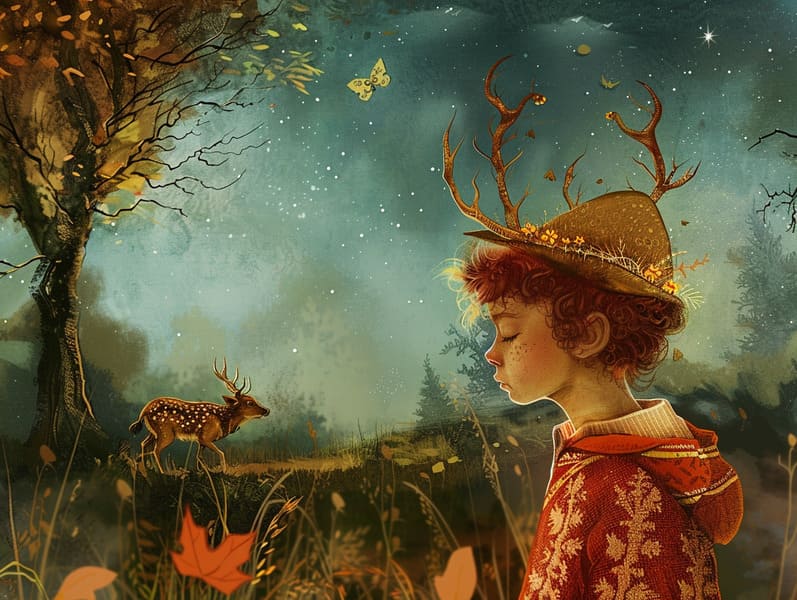The Beginning of Bedtime Fairy Tales with Their Unwavering Delight.
The Beginning of Bedtime Fairy Tales with Their Unwavering Delight.
Blog Article

Legendary fairy tales have timeless appeal. These tales have been shared from one generation to the next far before they were ever inscribed. They arose from a variety of backgrounds, including African traditions. They were initially shared among older generations, often carrying themes and messages reflective of the societal norms and beliefs of the time.
The Grimm brothers, Jacob and Wilhelm, were among the first to assemble many of these beloved fairy tales. Their anthology, "Grimm's Fables," included classics like "The True Bride," "The Story of Hansel and Gretel," and "Little Snow White," which have since become pillars in the world of traditional fairy tales. Similarly, Hans Andersen's enchanting tales, such as "The Story of the Little Mermaid," and "The Ugly Duckling," have captured hearts worldwide, securing their place in the pantheon of famous fairy tales.
Despite their historical roots, traditional fairy tales remain as significant as ever, especially as nighttime stories for kids. These fantastical tales are now available in numerous formats, including beautifully illustrated books, captivating animations, and digital fairy tales.
Their lasting appeal can be ascribed to several enchanting factors:
Ethical Lessons: Timeless fairy tales often illustrate important moral lessons. Tales like "The Shepherd Boy and the Wolf" teach the virtue of being truthful, while "The Tortoise and the Hare" underline the benefits of steadfastness and unpretentiousness. These tales offer young readers clear distinctions between ethical and unethical, guiding their moral compass in a gentle yet meaningful way.
Compassion and Knowledge: Timeless fairy tales frequently include figures facing problems and hurdles, motivating listeners to resonate with their struggles and cheer for their triumphs. For instance, "Beauty and the Beast" shows us the necessity of looking beyond appearances to know the real character of a individual, promoting tenderness and perception.
Cultural Knowledge: Many ancient fairy tales are rich in the cultural contexts from which they originated. Delving into these fairy tales can provide intriguing perspectives into different customs, cultivating a sense of world understanding and discernment.
Fantasy and Imagination: The supernatural elements in classic fairy tales—magical beings—boost children’s visions and dreams. These fairy tales bring readers to otherworldly realms, stimulating creative dreams and a sense of marvel that remains a lifetime.
Traditional fairy tales are not only entrancing but also instructive. They provide mesmerizing tools in enhancing various mind and heart abilities in kids. When fairy tales are spoken, they cultivate language skills by bringing new linguistic elements and sophisticated sentence structures. This practice also boosts hearing abilities and mental focus, as children keep up with the story, expectant to see what happens next.
Furthermore, analyzing the themes and characters of fairy tales can improve logical thinking and evaluative skills. The young are instructed to notice patterns, forecast, and realize cause and effect. These explorations also further children say their thoughts and feelings, cultivating their emotional intelligence.
In today’s electronic age, the proliferation of digital fairy tales has made these narratives more attainable than ever. Digital sites and apps present vast collections of traditional fairy tales that can be seen or listened to anytime, anywhere. Fairy tales told out loud are particularly well-liked, featuring an enjoyable way for young ones to immerse in these alluring stories. Narrated books and read-aloud videos guide characters and settings to life, often supported by captivating harmonies and musical scores that amplify the narrative journey.
The persistent attraction of ancient fairy tales lies in their ability to shift to modern days while preserving their basic principles. Contemporary updates of these fairy tales often show more multicultural figures and modern settings, making them accessible to today’s audience. However, the core values of fearlessness, warmth, and fair-mindedness remain unchanged, continuing to move young readers of all ages.
Old fairy tales also offer a sense of assurance and comprehensibility. They put forth a tidy narrative with a distinct beginning, middle, and end, often coming to a close with the conclusion of conflicts and the triumph of virtue over corruption. This dependability can be solacing for young readers, affording a sense of sturdiness in an shifting world.
Ancient fairy tales continue to bewitch and educate new generations, maintaining their captivation and value in modern society. As children's bedtime stories, they deliver up a perfect blend of enchantment and education, furthering moral values, empathy, and creativity. The existence of digital storybooks and the popularity of fairy tales read aloud ensure that these old tales remain obtainable to new generations.
By retaining and circulating these narratives, we continue to admire the rich tapestry of narrative artistry and cultural heritage. Whether you are experiencing a vividly illustrated book, delving into a cyber library, or listening via an audiobook, the fascination of Grimm's fairy tales is always famous fairy tales for children within reach. These narratives point out of the consistent ability of tales and its ability to link us across generations and cultures.
Regardless if you are seeing a beautifully illustrated book, delving into a web collection, or listening to an spoken story, the wonder of Grimm's fairy tales is always within reach.
These stories remind us of the invariable influence of narratives and its ability to unify us across time and space, establishing a link that delights and instructs alike.